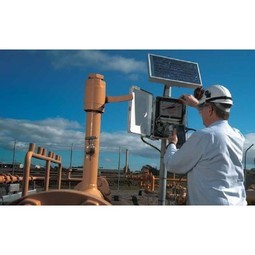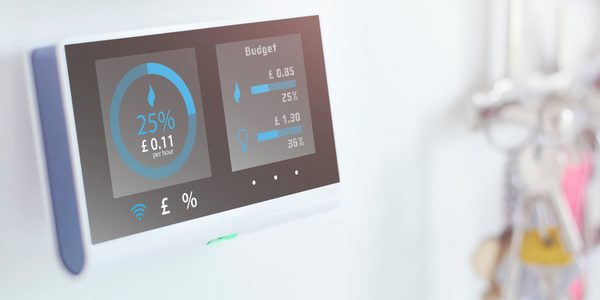公司规模
Large Corporate
地区
- Europe
国家
- Switzerland
产品
- Datadog Marketplace
- Datadog Mule® Integration
- Datadog APM
- Datadog Log Management
技术栈
- MuleSoft
- Anypoint Platform
- Tibco
实施规模
- Enterprise-wide Deployment
影响指标
- Productivity Improvements
- Cost Savings
技术
- 应用基础设施与中间件 - API 集成与管理
- 分析与建模 - 实时分析
适用行业
- 公用事业
适用功能
- 商业运营
用例
- 过程控制与优化
- 预测性维护
服务
- 系统集成
- 云规划/设计/实施服务
关于客户
Alpiq 是一家瑞士能源服务提供商和电力生产商。该公司专门从事贸易和电力生产,一百多年来一直利用无碳瑞士水力发电生产气候友好型可持续电力。如今,Alpiq 使用数字工具来优化发电和消耗以及生产者、产消者和消费者之间的能源流动,以稳定电网。集成主管 Amine Ajil 领导着一个由五人组成的小团队,负责 Alpiq 的集成平台和 API 实施。该公司正致力于成为一家云优先公司,这是其提高敏捷性和用户体验的总体使命的一部分。
挑战
Alpiq 是一家瑞士能源服务提供商和电力生产商,该公司使用五种独立的监控工具,这降低了生产力、增加了成本,并阻碍了其实现端到端的可视性。作为全公司云迁移计划的一部分,该团队还需要从其 Tibco 本地集成平台迁移到基于云的 MuleSoft 平台,并在 Datadog 环境中启用 MuleSoft 监控。如果无法正确了解其集成平台的性能,Alpiq 的团队将难以及时集成应用程序并解决问题,这可能会影响交易和发电厂运营等基本功能。
解决方案
作为更广泛的云迁移和工具整合战略的一部分,Alpiq 采用 Datadog 作为其全公司的可观察性平台。Ajil 发现了 Datadog Marketplace,这是一个集成、应用程序、软件许可证和专业服务的集合,可让客户更深入地了解他们的堆栈并改进工作流程。其中一个产品是 Datadog Mule® Integration,由 IO Connect Services 构建,IO Connect Services 是 Datadog 技术合作伙伴,专门提供信息技术咨询服务,技术包括 MuleSoft、AWS 和 Salesforce Commerce Cloud。设置过程很简单,IO Connect Services 团队随时待命,随时解答他的疑问。使用 Mule 应用程序内的 Datadog APM 连接器,Ajil 使用拖放界面构建流程,确定他想要发送到 Datadog 平台的信息类型,这允许 API 日志直接填充到 Datadog APM 的“跟踪”选项卡中。
运营影响
数量效益

Case Study missing?
Start adding your own!
Register with your work email and create a new case study profile for your business.
相关案例.

Case Study
IoT Solutions for Smart City | Internet of Things Case Study
There were several challenges faced: It is challenging to build an appliance that can withstand a wide range of voltage fluctuations from as low at 90v to as high as 320v. Since the device would be installed in remote locations, its resilience was of paramount importance. The device would have to deal with poor network coverage and have the ability to store and re-transmit data if networks were not available, which is often the case in rural India. The device could store up to 30 days of data.

Case Study
Automation of the Oguz-Gabala-Baku water pipeline, Azerbaijan
The Oguz-Gabala-Baku water pipeline project dates back to plans from the 1970’s. Baku’s growth was historically driven by the booming oil industry and required the import of drinking water from outside of the city. Before the construction of the pipeline, some 60 percent of the city’s households received water for only a few hours daily. After completion of the project, 75 percent of the two million Baku residents are now served around the clock with potable water, based on World Health Organization (WHO) standards. The 262-kilometer pipeline requires no pumping station, but uses the altitude differences between the Caucasian mountains and the capital to supply 432,000 m³/d to the Ceyranbatan water reservoir. To the people of Baku, the pipeline is “the most important project not only in 2010, but of the last 20 years.”

Case Study
GPRS Mobile Network for Smart Metering
Around the world, the electricity supply industry is turning to ‘smart’ meters to lower costs, reduce emissions and improve the management of customer supplies. Smart meters collect detailed consumption information and using this feedback consumers can better understand their energy usage which in turn enables them to modify their consumption to save money and help to cut carbon emissions. A smart meter can be defined in many ways, but generally includes an element of two-way communication between the household meter and the utility provider to efficiently collect detailed energy usage data. Some implementations include consumer feedback beyond the energy bill to include online web data, SMS text messages or an information display in consumers’ premises. Providing a cost-effective, reliable communications mechanism is one of the most challenging aspects of a smart meter implementation. In New Zealand, the utilities have embraced smart metering and designed cost effective ways for it to be implemented. The New Zealand government has encouraged such a move to smart metering by ensuring the energy legislation is consistent with the delivery of benefits to the consumer while allowing innovation in this area. On the ground, AMS is a leader in the deployment of smart metering and associated services. Several of New Zealand’s energy retailers were looking for smart metering services for their residential and small business customers which will eventually account for over 500,000 meters when the multi-year national deployment program is concluded. To respond to these requirements, AMS needed to put together a solution that included data communications between each meter and the central data collection point and the solution proposed by Vodafone satisfied that requirement.

Case Study
NB-IoT connected smart meters to improve gas metering in Shenzhen
Shenzhen Gas has a large fleet of existing gas meters, which are installed in a variety of hard to reach locations, such as indoors and underground, meaning that existing communications networks have struggled to maintain connectivity with all meters. The meter success rate is low, data transmissions are so far unstable and power consumption is too high. Against this background, Shenzhen Gas, China Telecom, Huawei, and Goldcard have jointly trialed NB-IoT gas meters to try and solve some of the challenges that the industry faces with today’s smart gas meters.

Case Study
British Gas Modernizes its Operations with Innovative Smart Metering Deployment
The UK government has mandated that smart meters are rolled out as standard across Great Britain by end of 2020, and this roll-out is estimated to create £14 billion in net benefits to the UK in consumer energy savings and lower energy generation demand, according to the Oxford Economics report, “The Value of Smart Metering to Great Britain.” While smart-metering systems have been deployed in many countries, the roll-out in Great Britain is unique because it is led by energy retailers, who have responsibility for the Electricity and Gas meters. The decision to have a retailer-led roll out was made by DECC (Department of Energy and Climate Change) to improve customer experience and drive consumer benefits. It has also led to some unique system-level requirements to support the unique local regulatory model.

Case Study
OneWireless Enabled Performance Guarantee Test
Tata Power's power generation equipment OEMs (M/s BHEL) is required to provide all of the instrumentation and measurement devices for conducting performance guarantee and performance evaluation tests. M/s BHEL faced a number of specific challenges in conducting PG tests: employing high-accuracy digital communications for instrumentation, shortening setup and dismantling time, reducing hardware required, making portable instrument setup, avoiding temporary cabling work and the material waste costs







